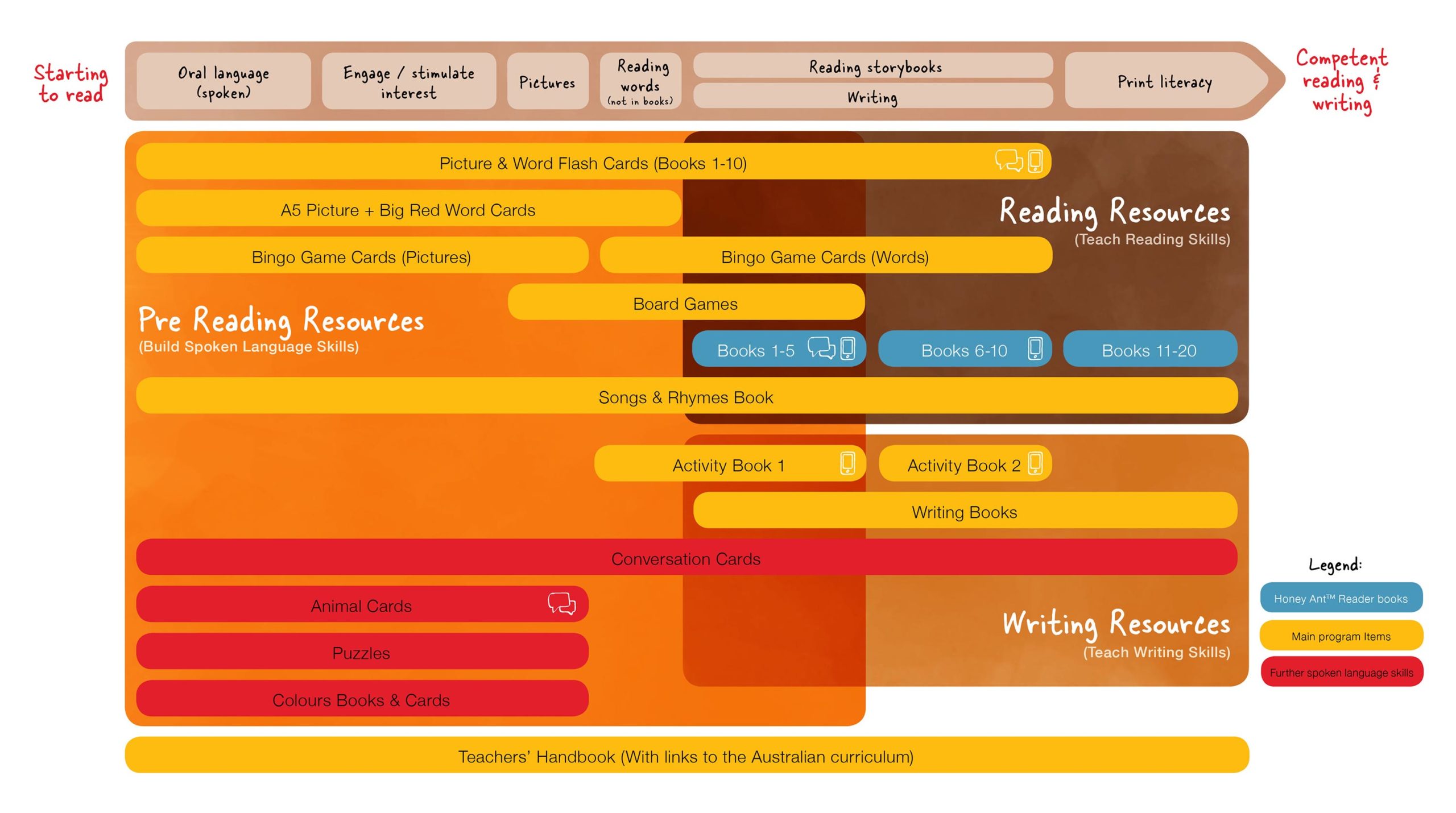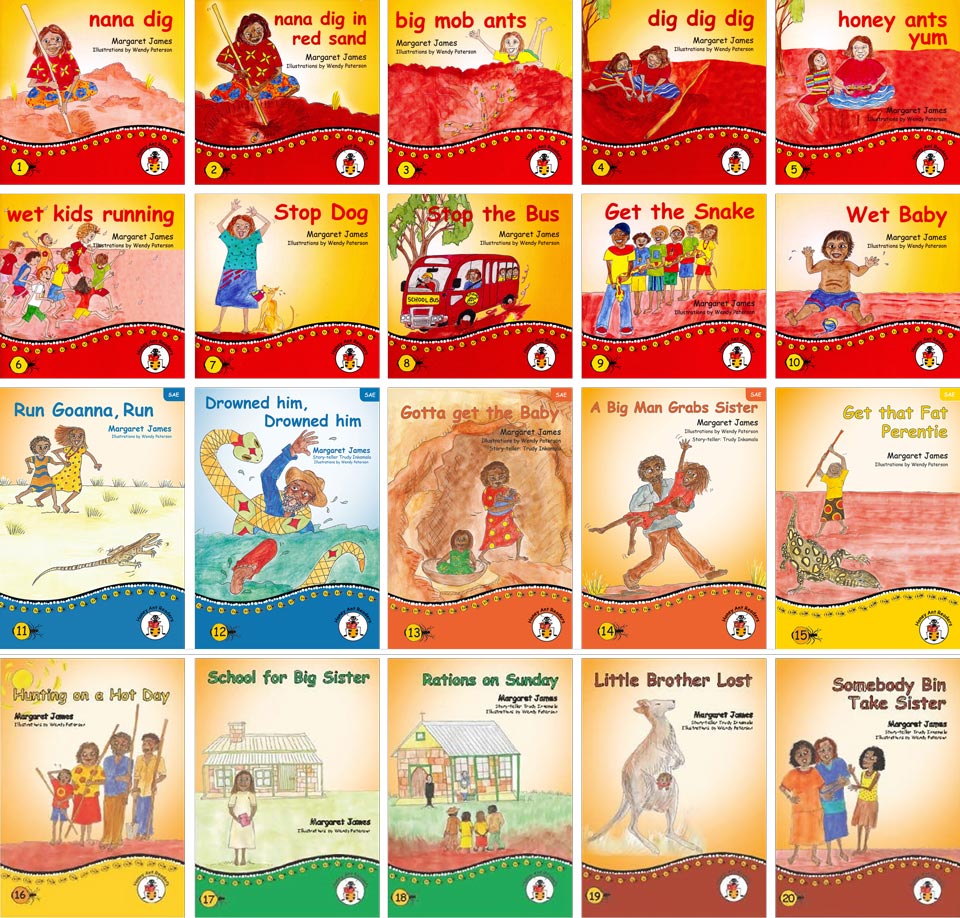Guide to the Honey Ant Readers
This Guide Page is designed to help educators and all people who are interested in the resources, to understand how and why they have been developed and structured, and how they can be used in any setting - educational, community or home.
Below you will find detailed information on the following topics:
A set of literacy resources for Aboriginal learners of all ages.
Overview
The Honey Ant Readers are a set of books and supporting resources to help teach Indigenous Australian learners to read. The materials also support:
- Oral language development
- Preparation for reading
- Decoding and phonics
- Vowel-consonant awareness
- Word recognition
- Explicit awareness of grammar
- Acquisition of Standard English
The Honey Ant Readers are used by teachers in classrooms, prisons and childcare centres; they are held in metropolitan, regional, university and hospital libraries, women's centres, aged care facilities and youth centres; and they are enjoyed in private homes within the community.
The resources help educators to teach literacy within the context of Indigenous culture, building on familiar words and languages to encourage both reading and writing. They also teach reading to learners by incorporating aspects of Aboriginal English into the text, while building oral Standard Australian English through songs and rhymes.
We know that it is very difficult for people to learn to read and write in a language they do not speak.
We also know that once a person can read in one language, they can transfer that skill to another.
With the Honey Ant Readers, learners learn to read in the language they speak in the playground, their lingua franca. In doing this we pay respect to the language of the reader and build self-esteem and pride within the learner. In the case of many Indigenous Australians this is a form of Aboriginal English. The learners can then transfer their reading skills to reading and writing in Standard Australian English (SAE).
The resources include a wide range of activities which have been written specifically with Aboriginal English speakers in mind. These have a focus on phonics and grammar to reinforce and teach oral SAE. They include original songs and rhymes which assist learners of English as an additional language in acquiring SAE. Once SAE has been acquired orally, learning to read in that language is easier because it is meaningful.
The Honey Ant Readers are heavily underpinned by research. Learn what inspired the Honey Ant Readers and how they came to be in this interview with Margaret James.
The Honey Ant Readers follow a unique process in order to allow a student the best opportunity for success. This approach aims to instill confidence in the reader and encourage them to want to read more books by experiencing the taste of success in reading. Learn how to best deliver this program to your students.
Visual Guide
We have many other learning materials that enhance the Honey Ant Readers' learning experience. All of our products can be viewed in the diagram below, which explains the appropriate order in which we recommend you introduce the resources.
Developing the Honey Ant Readers
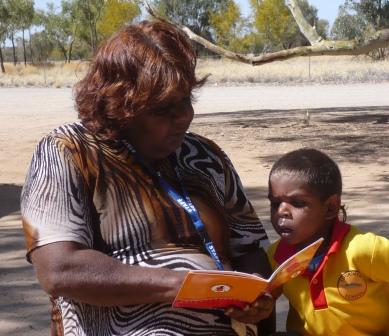
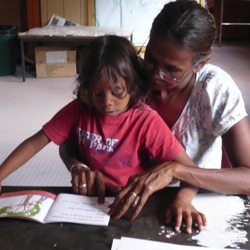
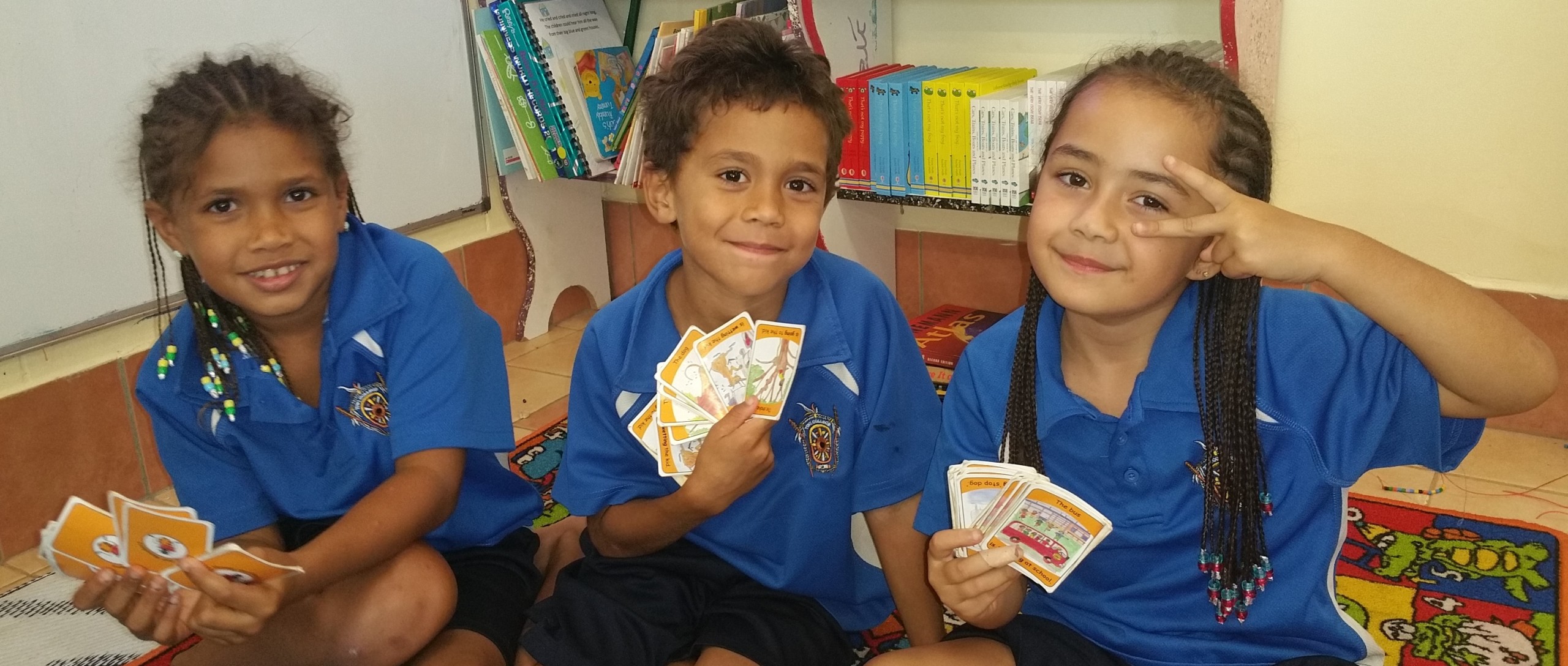
The Honey Ant Readers (HAR) team are continually developing new resources inspired by our regular field research throughout the year, and the invaluable feedback we receive from communities.
Why were the Honey Ant Readers Developed?
Indigenous people in Central Australia are often talented linguists and many speak two, three, four or more languages.
Despite this, many Indigenous children achieve below the National benchmarks in literacy tests. This prompted HAR's research into their reading needs which formed the backbone of the resources and led to us working collaboratively with members of the Indigenous community: Elders, adults, children and teachers.
Teachers in remote communities in Australia, where populations are very mobile, have classes in which some of the students are advanced readers, some beginners, some have hearing difficulties, some attend school only 50% of the time and some arrive at school for the first time unable to speak Standard Australian English (SAE).
This means teachers have a great need for resources that cater to the individual needs of their students.
The HARs are designed to be used in classrooms and also in individual programs that go from pre-reading to advanced reading. The songs, board games and activity books can be used as group activities but it is preferable to read individually or in small groups when possible.
The materials are suitable not only for teachers, but cater for assistants, tutors or volunteers by guiding the delivery of the content. The material’s intent is to enable an unqualified assistant to work through the resources, whilst having fun and building the student’s self-confidence.
The HARs were originally written as the core texts of a ‘learn-to-read’ package. They have evolved to have other applications, such as:
- Being books for all parents to read with their children and picture books for young children to browse through;
- Giving young learners, adults and secondary students with little knowledge of print literacy an exciting, familiar and comfortable introduction into reading;
- Encouraging speaking through the use of the cards and board games;
- Initiating discussions about the role and use of Aboriginal English (AE) in Australian communities, and the differences between AE and SAE in mainstream schools and universities;
- Promoting the ongoing maintenance and preservation of Indigenous Languages and Culture.
Underpinning Research
The content of the Honey Ant Readers is underpinned by empirical and theoretical research. We have embedded a number of concepts that aid the take-up of reading and SAE. We use an adapted model of Second Language Acquisition - scaffolding learners from first language into SAE - which was created by Margaret James.
Some of the underpinning research shows that learners whose first language is not English make faster progress in reading, and read with deeper comprehension, when the material is familiar to them, even though the language may not be. The HAR literacy resources help resolve the issue of a lack of engaging, culturally relevant and appropriate learn-to-read resources for Indigenous learners, particularly in communities where little, if any, Standard English is spoken.
Collaborative Development
Consultation, observation, recordings of stories and general conversational language, shaped the backbone to the underpinning theoretical framework. This informed the text for the books.
These were to be books that the community could relate to, feel drawn to, read with ease and enjoy. This is why all of the HAR stories and illustrations are reviewed and approved by Elders before being printed, to ensure their cultural appropriateness.
Elders, teachers, children and the community contributed to the project by sharing their stories, editing the illustrations, conducting final proofing of the books and trialling the completed HARs.
Profile biographies are available for some of the participants in the development process.
View: Collaboration
Aboriginal English
For many Indigenous people in Australia, Aboriginal English (AE) is a first language. In the schooling context, we often refer to this as 'the language of the playground'. Learning to read in first language has many known cognitive benefits. Legitimising a student’s first language also improves confidence, heightens self esteem and leads to feelings of security and well-being. This in turn leads to enhanced academic success.
A range of differences between Standard Australian English (SAE) and AE are considered in the Honey Ant Readers in order to best cater for the Indigenous-learner. These are:
- Syntax (grammar)
- Phonology (pronunciation)
- Semantics (meanings)
- Lexicon (vocabulary)
- Pragmatics (how is it used)
The first edition of the HARs is written in sympathy with the lingua franca, light AE, by including features of AE, with the text gradually and systemically moving into colloquial SAE across the 20 books. This is done by following the natural order in which speakers of other languages have been shown to acquire the grammatical structures of Standard English.
As new words are introduced, the rationale for doing so is explained in the Honey Ant Readers Teacher's Book.
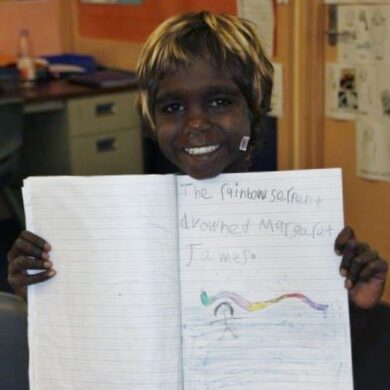

Second Language Acquisition
We have 2 editions of the HARs. In our original, first edition, the language of the HARs progresses from AE to colloquial SAE over 20 books. In the second edition the language is colloquial SAE, and more aspects of SAE (for example, the past tense) are also included as the books progress.
In both editions, the choice of which aspects of SAE to add in each book is done with reference to the natural order in which it has been shown that speakers of other languages acquire the morphemes of SAE. We do this, while also allowing for differences due to the influence of AE.
Simultaneously, oral SAE is taught through songs and rhymes which are provided at the back of each book.
Details of this process are explained in further detail for teachers in the Honey Ant Readers Teacher's Book.
Age Suitability
The HARs are written to assist Indigenous beginner readers of all ages with their print literacy. The HAR reading levels are not linked to age, but to individual progress.
As the themes in the books cover traditional Indigenous activities or, in some cases stories passed down through the generations, older readers are comfortable reading the books without being made to feel ‘childlike’.
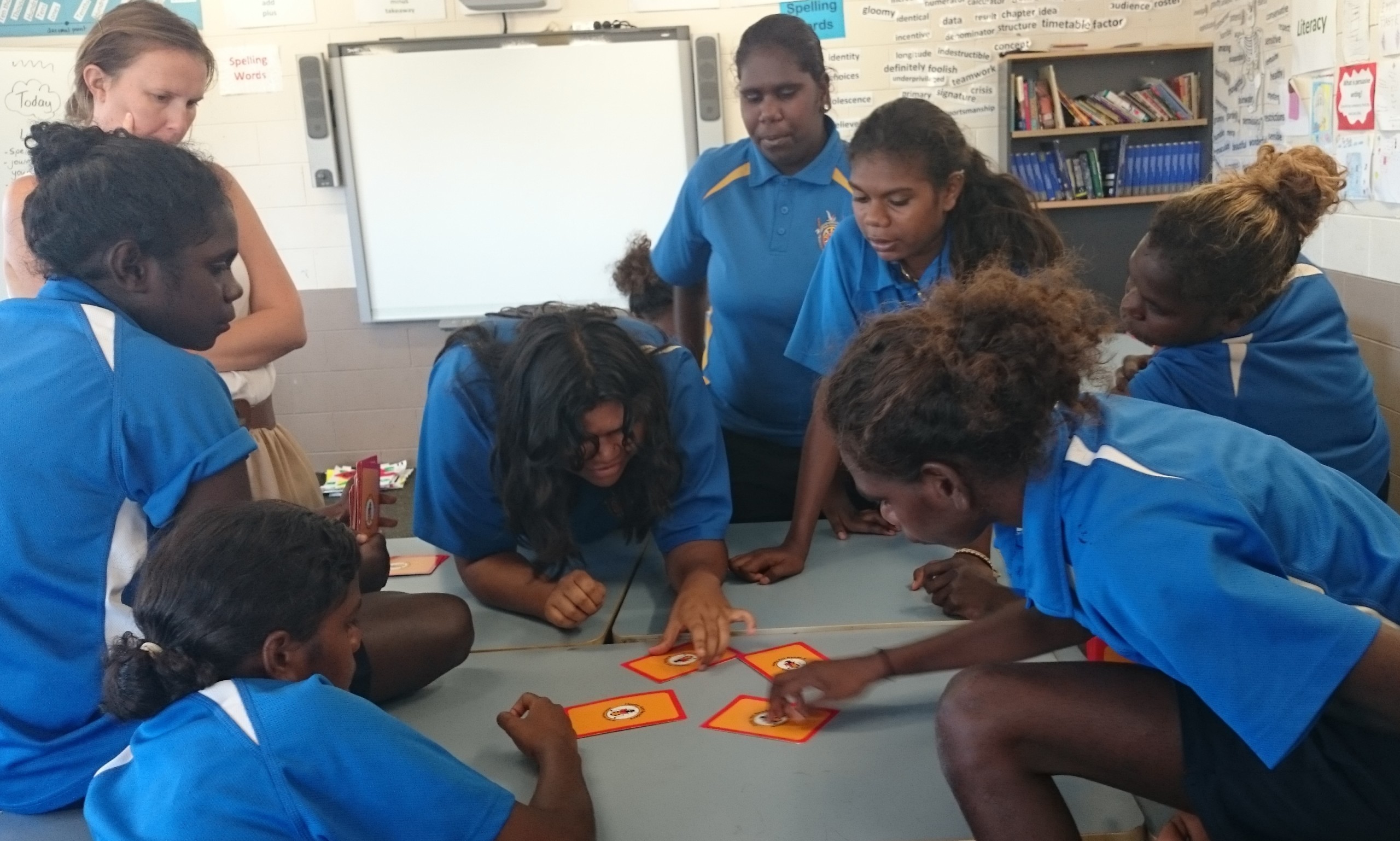
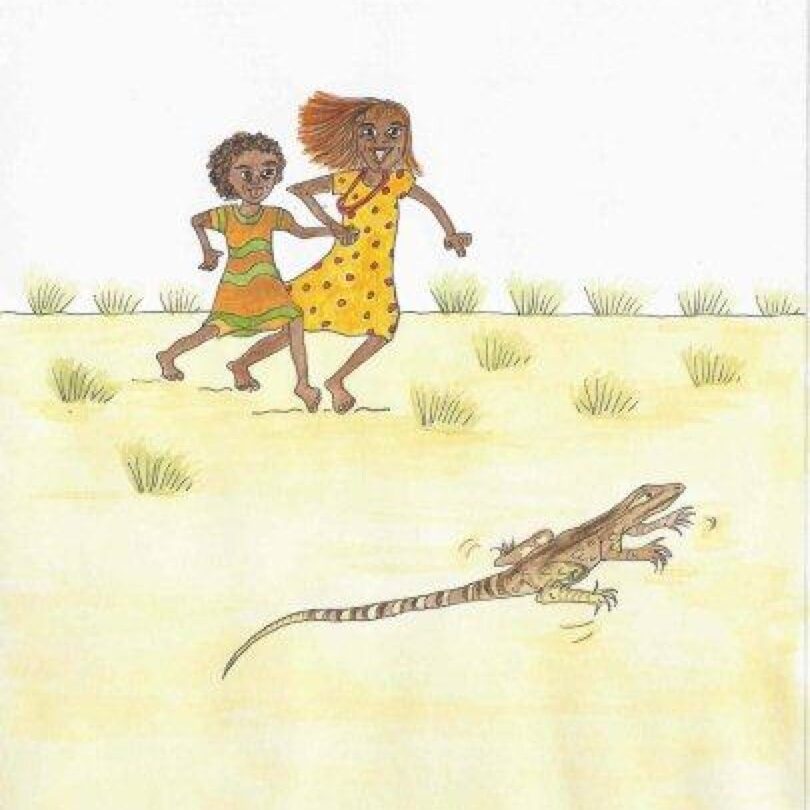
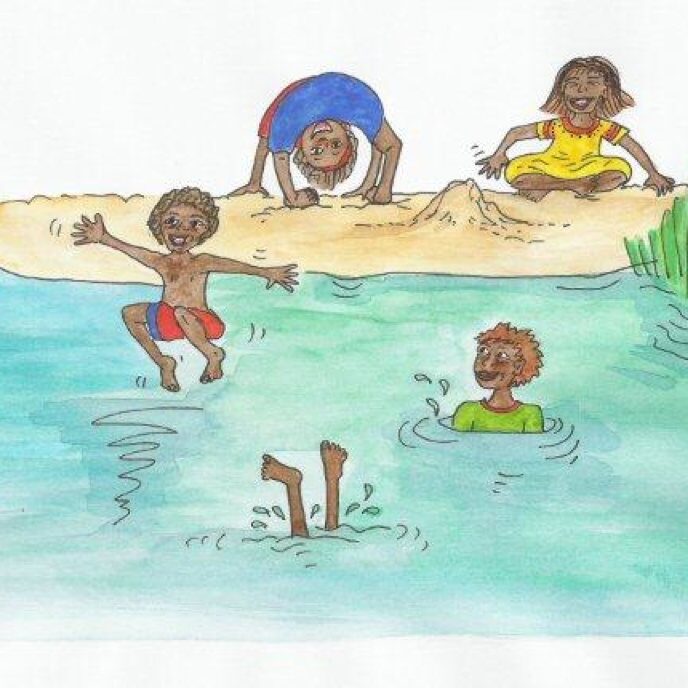
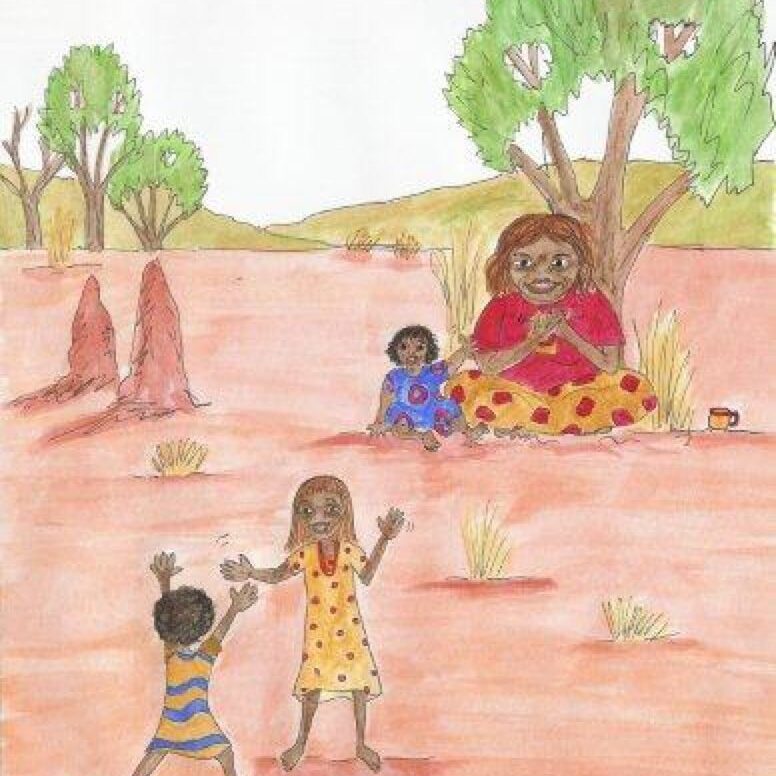
Reading
The desired outcome of the books is reading - understanding that text represents words and that these words have meaning. At the same time, the students are acquiring SAE through parallel activities including, but not limited to, songs and rhymes.
Once they can read, learners will readily transfer that skill to reading in another language with the same alphabet, such as SAE or their own Indigenous languages.
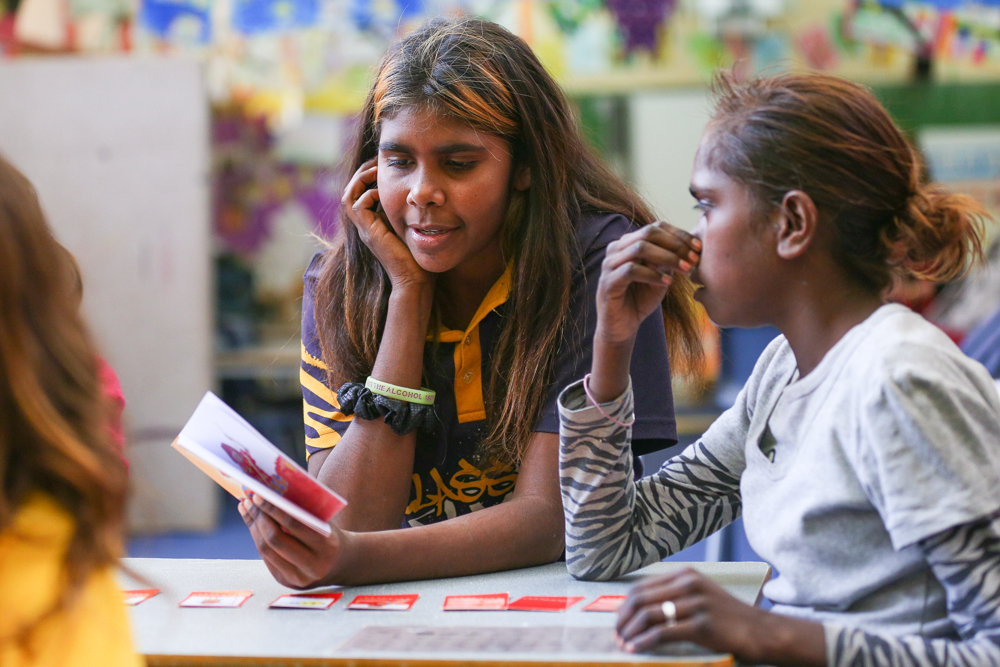
Compounding Vocabulary
The vocabulary in the HARs builds in complexity and volume throughout the series, without the stories themselves becoming longer or more complex. Keeping the length of each book short enables the learners to read them in a reasonably short amount of time, giving them the satisfaction of successfully completing a task.
New words are progressively introduced in the books, a few at a time. To reinforce the new vocabulary, words are repeated frequently throughout the books and make up the core content of the parallel activities that are introduced as preparation for each new book. The vocabulary continues to increase over the series.
Phonological Awareness
Phonics
Studies show that awareness of sounds in words is highly correlated with reading ability. The first HAR books draw attention to individual sounds by only introducing phonic words; words in which there is a one-to-one correspondence between the letter and the sound, for example d-i-g.
Consonants
The consonant sounds which are found in Central Australian Aboriginal languages are introduced into the HARs in the first stages of the series. Unfamiliar consonant sounds are introduced in later books e.g. /sh/.
Vowels
- HAR 1 to 4 contain only the SAE short vowel sounds.
- HAR 5 gradually incorporates the long SAE vowels.
- HAR 9 includes the SAE diphthongs.
- From HAR 13 all SAE vowel sounds are used.
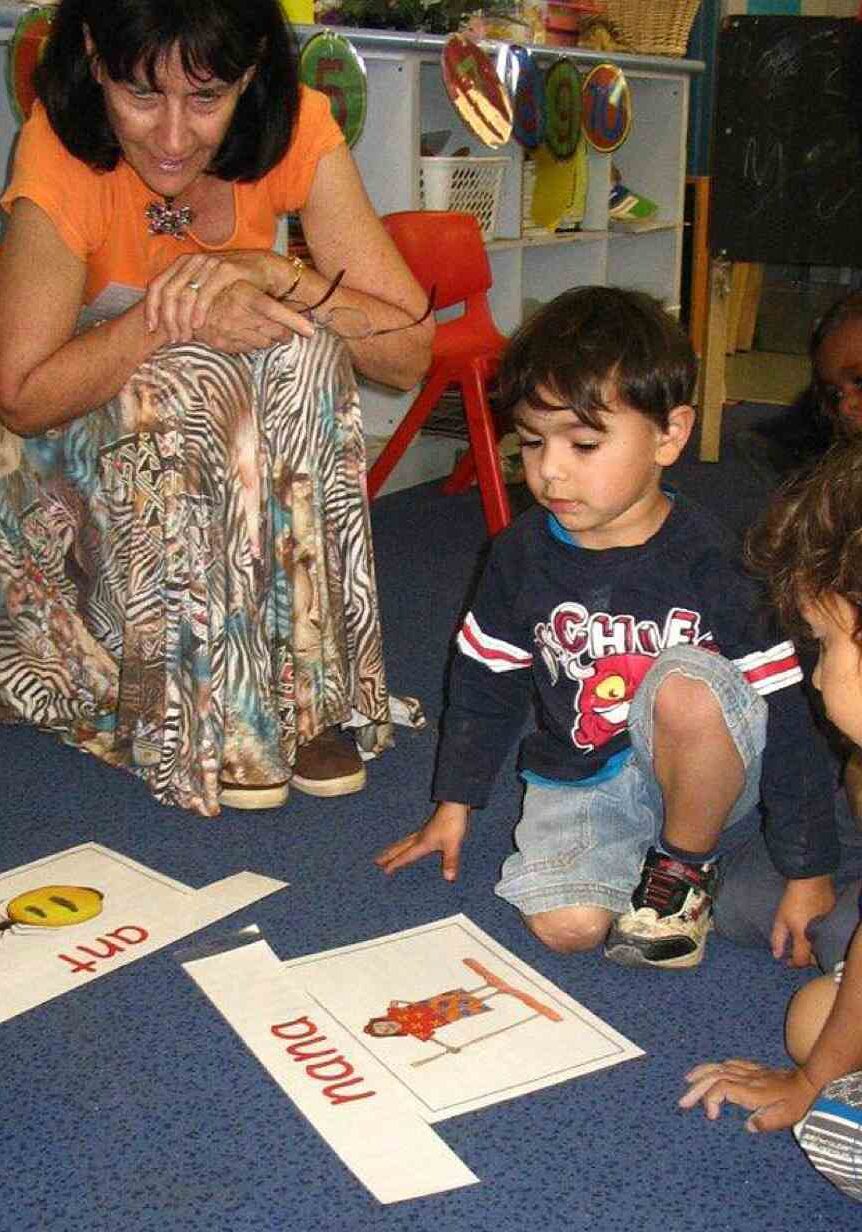
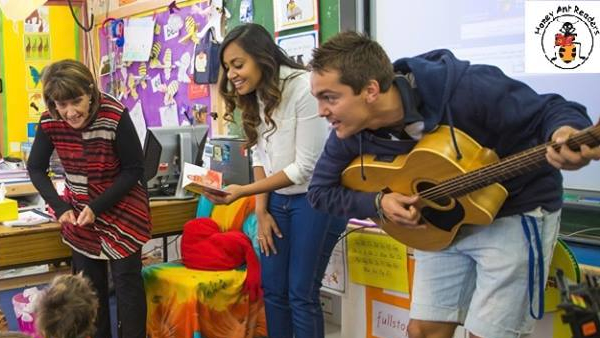
Songs and Rhymes
There are songs and rhymes at the end of each book, which teach oral SAE. The songs and rhymes reinforce the vocabulary, specific SAE pronunciation, or an aspect of grammar that was focussed upon in that particular book. Songs and rhymes, as well as being fun, are known to assist in the acquisition of language skills.
The lyrics are carefully written by Margaret, to teach aspects of SAE to speakers of Aboriginal languages, including Aboriginal English.
Focus on Grammar
Learning English as an Additional Language is more successful if learners are explicitly taught the grammar. Resources that help the teacher to do this are included in the HAR supplementary materials.

The Honey Ant Reader Book Collection
There are 20 Honey Ant Reader books that provide a staged set of early readers for learning to read. These are accompanied by matching hands-on resources that encourage interactive learning and prepare the young beginners for reading.
The Honey Ant Readers can be purchased in a Starter Kit (a complete set of all resources needed for a school), in separate Book Kits or as individual books.
View Individual Honey Ant Reader Books
Book 16: Hunting on a Hot Day*
Book 17: School for Big Sister*
Book 18: Rations on Sunday*
Book 19: Little Brother Lost*
Book 20: Somebody Bin Take Sister*
* Books 16 to 20 are available for ordering in late 2019

